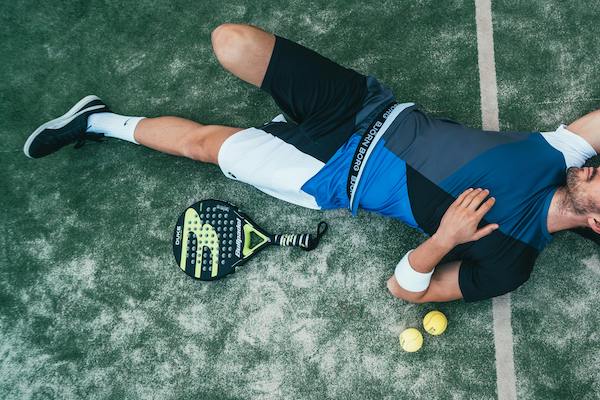Summer is a prime time for high school athletes to engage in sports and outdoor activities. Even though it’s the off-season for many sports, it’s a great idea to continue to work on sport-specific skills and build endurance. With extra free time, the summer is the perfect time to try a new sport or engage in your favorite summer sport or activity. But with the increase in physical activity comes a heightened risk of sports injuries. Understanding how to prevent and treat these common injuries can help athletes stay active and healthy throughout the summer season.
Here’s an athlete’s guide to keeping safe and managing injuries in the summer.
Common Summer Sports Injuries
Heat-Related Illnesses: Heat exhaustion and heatstroke are at the highest risk and the most dangerous during the summer months. Symptoms include dizziness, nausea, rapid heartbeat, and confusion.
Dehydration: Not drinking enough water can lead to dehydration. Signs of dehydration include dry mouth, fatigue, and dark-colored urine.
Sprains and Strains: These injuries occur when ligaments or muscles are overstretched or torn, often from sudden movements or improper technique. Practicing a new sport can increase the risk of a sprain or strain.
Fractures: Falls and high-impact collisions in sports like football, soccer, or basketball can result in broken bones.
Tendonitis: Overuse of muscles and tendons, particularly in sports involving repetitive motions like tennis or running, can lead to tendonitis.
Sunburn: Prolonged exposure to the sun without protection can cause painful sunburns and increase the risk of skin cancer.
Blisters: New or ill-fitting shoes can cause blisters on the feet, especially during running or hiking. Blisters can form from not wearing moisture-wicking socks and the constant friction from exercise.
Preventing Summer Sports Injuries
Hydration and Nutrition
Stay Hydrated: Drink plenty of water before, during, and after exercise. Aim for at least 8-10 ounces every 20 minutes during activity.
Balanced Diet: Consume a diet rich in fruits, vegetables, lean proteins, and whole grains to fuel your body and support recovery.
Proper Warm-Up and Cool Down
Warm-Up: Always warm up to prevent a sports injury. Begin with 5-10 minutes of light aerobic exercise followed by dynamic stretching to prepare your muscles and joints for activity.
Cool Down: Finish your workout with a cool-down period that includes static stretching to enhance flexibility and reduce muscle soreness. This is a great way to get the heart rate down after a summer workout.
Protective Gear and Proper Equipment
Wear Appropriate Gear: Use helmets, pads, and mouthguards as required for your sport to prevent injuries.
Proper Footwear: Invest in quality, well-fitting shoes that provide support and cushioning for your specific activity. Replace sneakers when necessary.
Sun Protection
Use Sunscreen: Always apply sunscreen before going out in the sun. Sunscreen should be at least SPF 30, and reapply every two hours.
Avoid Overtraining: Gradually increase the intensity and duration of your workouts to prevent overuse injuries. Cut sports workouts short when playing in the heat. Get your workout or game in the early morning or evening to avoid peak sun.
Treating Common Summer Sports Injuries
Heat-Related Illnesses
Get Cool Quick: Move to a cooler place. Seek shade, cool off in the car or inside a business. Drink water, and apply cool, wet cloths to the skin. For heatstroke, seek emergency medical help immediately.
Dehydration
Rehydrate: Drink plenty of water. Make sure to also drink an electrolyte-replenishing sports drink. Severe dehydration may require medical intervention.
Sprains and Strains
R.I.C.E. Method: Rest, Ice, Compression, and Elevation are key. Rest the injured area, apply ice packs for 20 minutes every hour, use compression bandages, and elevate the limb to reduce swelling.
Fractures
Seek Medical Attention: Immobilize the injured area and seek immediate medical care. Follow your doctor’s instructions for casting, bracing, or surgery if necessary.
Blisters
Protect and Treat: Clean the blister with antiseptic and cover it with a blister pad or bandage. Avoid popping blisters to prevent infection.
Conclusion
Preventing and treating common summer sports injuries is essential for high school athletes to stay active and enjoy their favorite activities safely. By staying hydrated, warming up properly, using the right equipment, and protecting against the sun, athletes can minimize their risk of injury.

